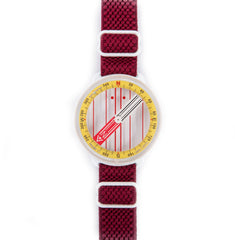Mountain Bike Navigation - Part 1
How to be confident with navigation decisions and pick up good habits.
Like many things in life, speed comes with confidence, and confidence comes with practice. So, when it comes to navigation, what should you practice?
There is an awful lot of navigation theory, practice and principles. Much of it complicated and too specific. What we are looking for, is getting the fundamentals to flow, to make navigation as natural as possible. The nirvana is having the confidence to say; "I am here, and I am going in this direction".
Let's start with this video, and then dissect it a little.

Habit 1 - Set the map, keep it set, set it perfectly.
In this video the map is kept orientated to the ground whenever possible. When you need to concentrate on riding, you also need to remember to switch your mind back to navigation mode and set the map as soon as the terrain allows. Use the compass like the video shows. With time this will become natural and you may not always need a compass, especially if you stick to bridleways and bike trails. Don't try and short cut this habit, you will do that naturally anyway. For now, make a point of setting the map frequently and perfectly.
Habit 2 - Look up and around you, all the time, remember the big features you pass.
The next thing the video shows us is observing the clues the environment gives us. We don't need to bury our heads in contour lines, if far bigger and obvious clues are present. When we are riding fast and can't take our attention off the trail to look at the map, we must remember a sequence of features that we can check off our map when we can. Just like Kim's game, we need to note things like: wall on the left, stream crosses the trail, footpath sign on the left... etc. Then, we retrace our steps to pin point our position. This technique needs practice, and most importantly it requires us to keep our eyes up, looking forward and being observant.
Habit 3 - Get 2 bits of evidence to confirm your new direction.
Finally; be a detective. Complete the puzzle with all your information. The map is set, you can identify the features you passed on the trail you were riding. This means that at the junction you need to turn at, you will be confident you are actually in the correct place. Also, you will have the map set, leaving you a simple, left, right, decision. In practise, trails are not roads, and it is not always as clean cut. So, the final fundamental skill is to check. Look before your leap, and gather the clues to confirm that you are about to set off in the right direction. Is it on the correct bearing? use your compass to check. A simple North, South, East West, might be enough. Does the trail go up or down hill? Is there a massive sign and a really obvious feature?
